Looking southeast from East Pettigrew St., 1895.
(Courtesy Duke Rare Book and Manuscript Collection / scanned by Digital Durham)
The oldest still-extant (at least partially) hosiery mill complex in Durham is the Durham Cotton Manufacturing Company complex at East Pettigrew and South Driver Sts.
The Durham Cotton and Manufacturing Company was started through the impetus of Julian Carr, who sought out capital from the Odell family, textile magnates of Greensboro and Concord. William H. Branson of Greensboro was recruited to be the secretary-manager of the company. With $130,000 of capital, the factory was established.
The cornerstone of the original plant was laid in July 1884. Robert Durden notes that despite the intense heat that day, a large crowd gathered for the groundbreaking.
"The choir of the Methodist church 'rendered in fine style an appropriate hymn, followed by an impressive prayer by Rev. T A Boone.' A minister from Concord then delivered an address filled with 'valuable information. It was a joyous day for all true Durhamites.'"
The original plant consisted of a 4 story manufacturing building, fronted by a 7 story belfried tower, twelve weaving sheds, a picker building, as well as engine and boiler rooms with a rather immense smokestack. Carr constructed Carr's Chapel (a Methodist church) on the north side of the railroad tracks, facing the mill, and an abundance of mill housing immediately to the south of the structure.
From the Bird's Eye view of Durham, 1891 - looking north.
(Courtesy Duke Rare Book and Manuscript Collection / scanned by Digital Durham)
The factory began producing a muslin for tobacco bag manufacture. The venture was successful, the production was quickly diversified to include chambrays, domets, ginghams, and 'colored cloths'. Within 5 years had increased its capital to $150,000. The factory was soon expanded. By 1888, the mill had more than 8500 spindles and 200 looms operated by 225 workers. Around 1895, a weaving and carding building was added to the west of the main building, which was soon doubled in size to the west. A large warehouse building with a monitor roof was also added to the south of the original structures.
Looking southeast from East Pettigrew St. at the expanded plant, ~1910s.
In 1899, secretary-treasurer Branson, who served in that capacity for both the Durham Cotton Manufacturing Co and the Pearl Cotton Mill, was killed when, while working with a mechanic on a faulty boiler, it exploded, killing them both instantly. Branson was replaced by Jessie Harper Erwin, brother of William Erwin, who was secretary-treasurer of the Erwin Cotton Mills.
It is unclear to me when control of the Durham Cotton Manufacturing Co. passed from the Odell and Carr conglomerate to the Dukes, but it appears to have occurred by the time Erwin took over.
By 1910, the mill employed 500 people, operating 820 looms, and 22,554 spindles producing ginghams and cheviots.
Durham Cotton Manufacturing Co., 1926
An industry-wide downturn in demand for textiles, particularly cotton hosiery, badly damaged the textile industry in Durham - the Durham Hosiery Mill No. 1, the Commonwealth Cotton Mfg, the John O'Daniel Hosiery Mill, and this mill went out of business during the late 1920s-1940. Given that Erwins were in control of both mills, I am unsure as to why they let the Durham Cotton Manufacturing Co. flounder, while Erwin Mills did not. Perhaps DCMC would have benefitted from having "Erwin" attached to is name.
By 1937, the Durham Cotton Manufacturing Company was out of business - the site was sold to the Durham Box Corporation.
Aerial of the complex, looking west - undated, but likely 1940s. The legend is, unfortunately, not available. However, per the Sanborn Map from 1937: 1) Water Tower, 2) Reservoir, 3) Reservoir, 4) Dye House, 5) Cotton Warehouses, 6) Weave House ("Carpr Shop in basement), 7) Boiler Room, 8) Speeder Room, 9) Main Mill, 10) Finishing and Shipping, 11) RR siding, 12) RR siding, 13) NC RR.
You can see the the belfry on top of the tower has been removed.
(Courtesy Duke Rare Book and Manuscript Collection / Chamber of Commerce collection)
Looking northwest from the rear of the complex, likely 1940s.
(Courtesy Duke Rare Book and Manuscript Collection / Chamber of Commerce collection)
By the late 1940s, the Mead Container Corporation bought the buildings.
Former Durham Cotton Manufacturing Company, used by Mead Container Corporation, looking southeast, 1950s.
(Courtesy The Herald-Sun)
Very unfortunately, in 1955 they demolished the main, original building and tower, as well as the smokestack. (And built nothing in its place.)
Smokestack and main building, looking west-northwest, 03.14.55.
(Courtesy The Herald-Sun Newspaper)
1979
1979
In 1979, the buildings were sold to Southchem (a chemical company,) which renovated the weaving and carding buildings, warehouse, and part of the original boiler room building. In 2001, the facility became part of the Brenntag chemical company through a merger; the company continues to utilize the complex today.
Looking southeast at the former carding and weaving buildings, 01.01.09. (G. Kueber)
This hole in the middle of the complex is the former site of the main building and tower - 01.01.09. (G. Kueber)
Satellite image, 2007. I've numbered the still extant buildings to correspond to the buildings in the 1940s image above.

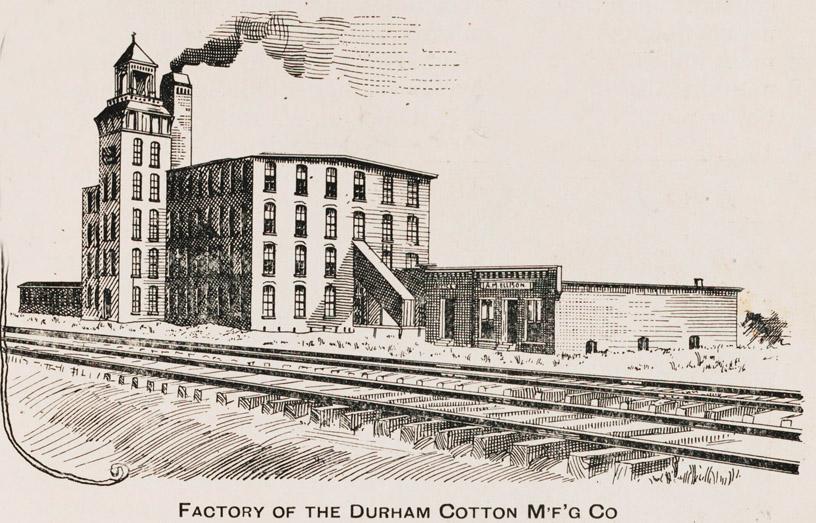

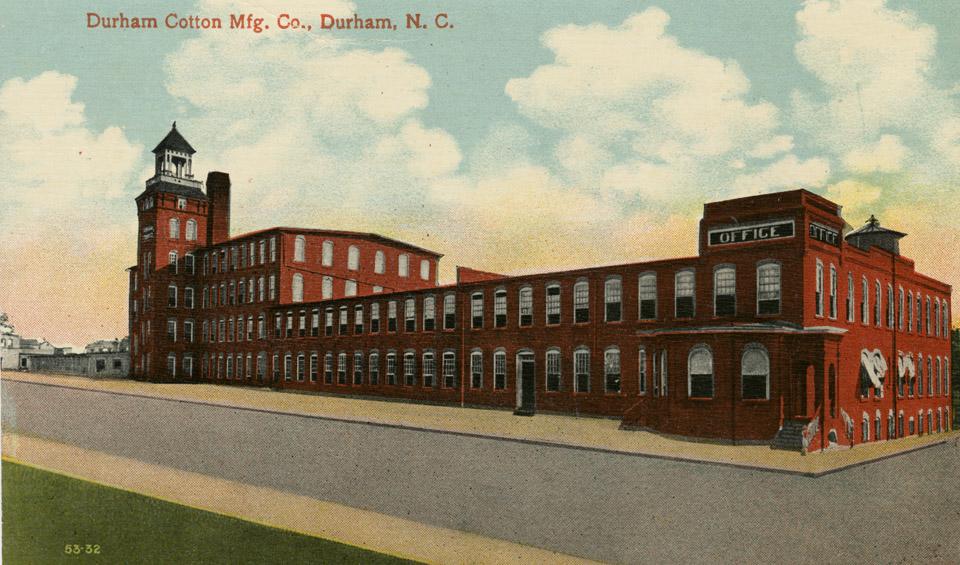
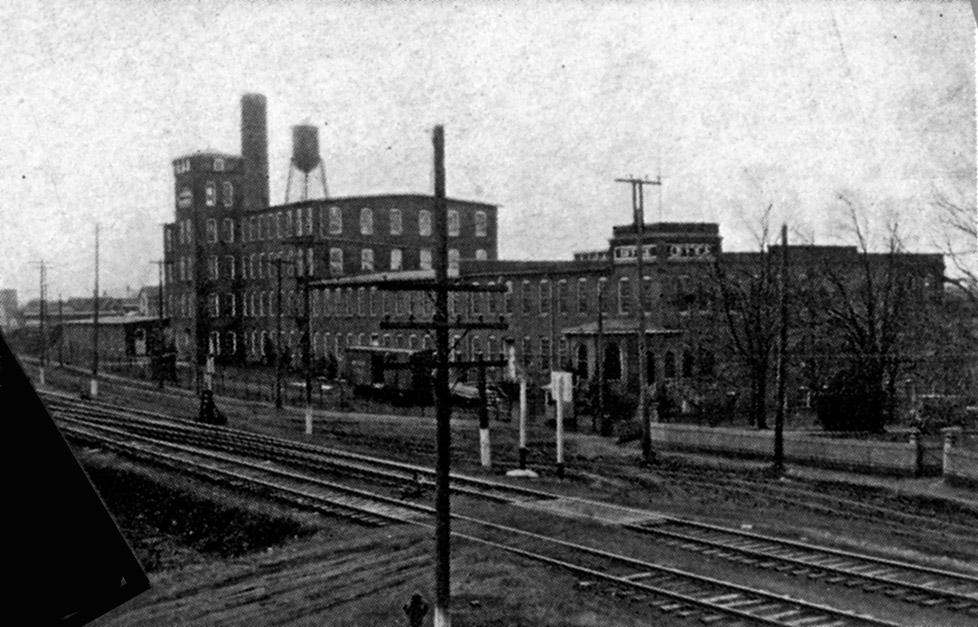
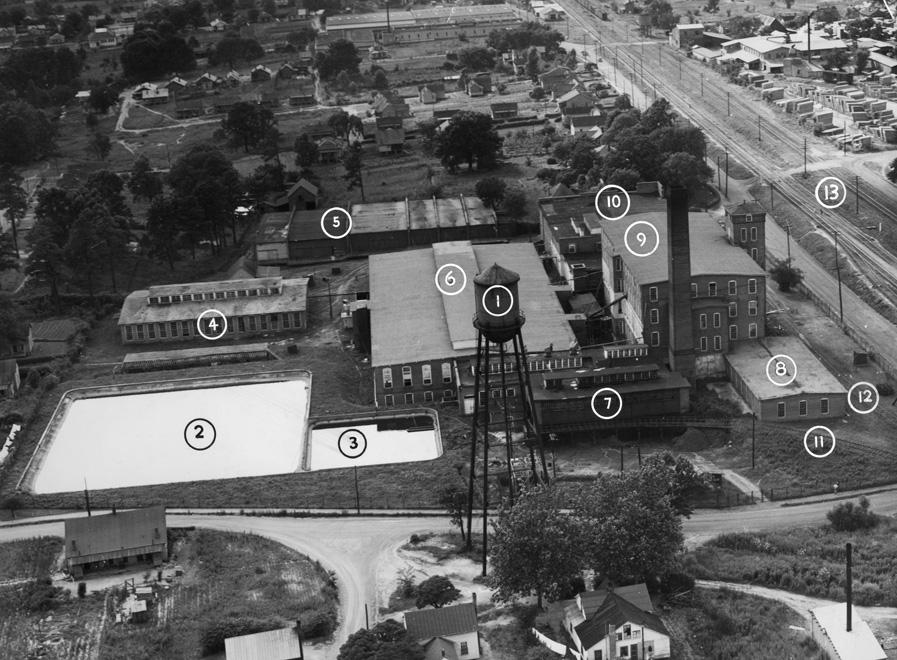
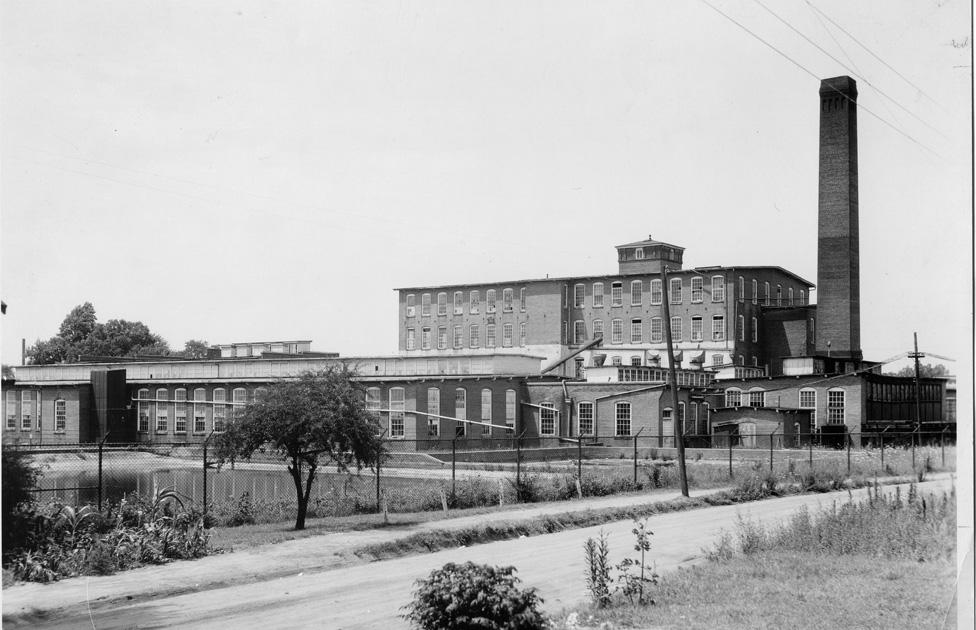

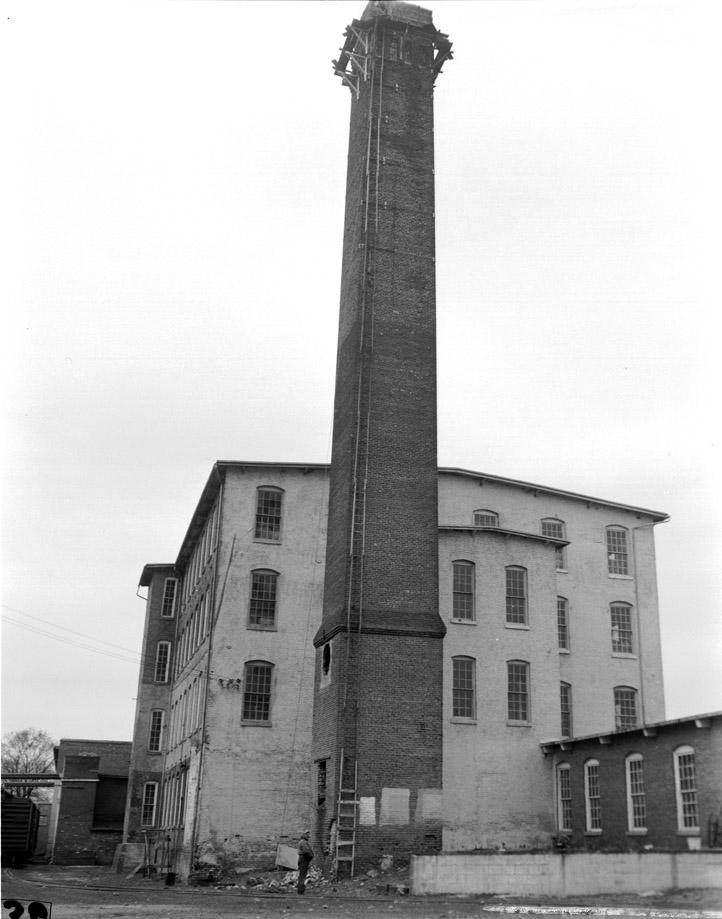
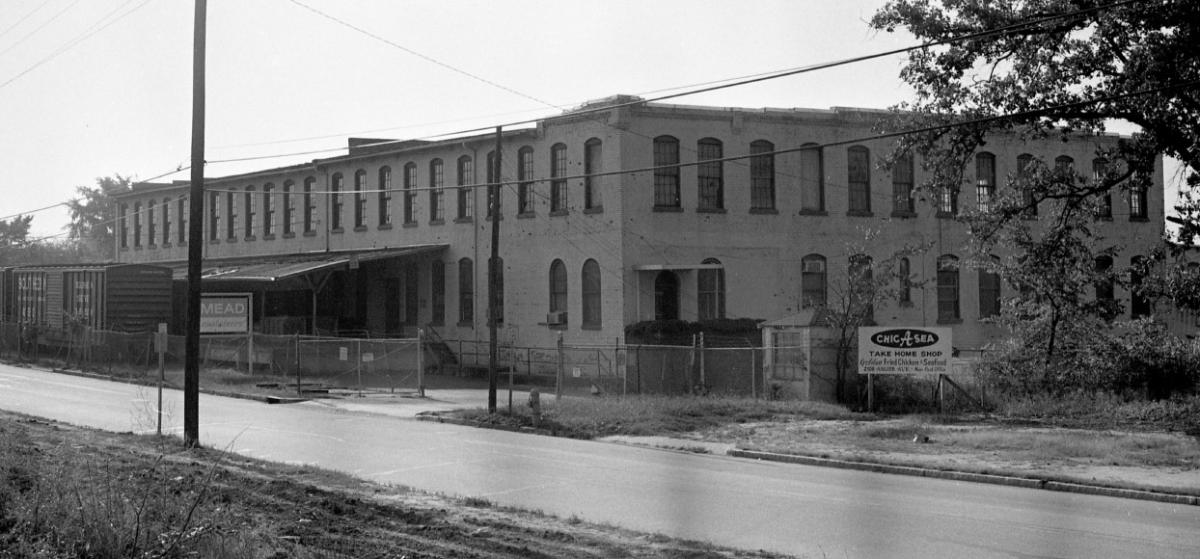
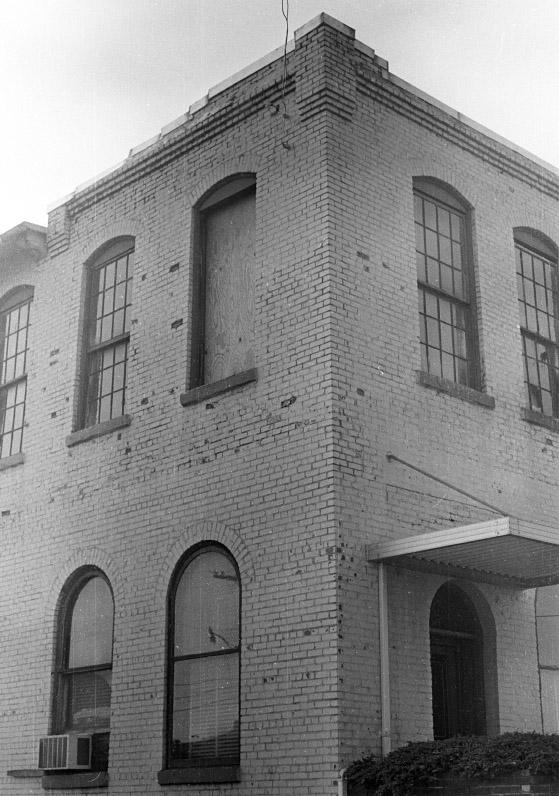

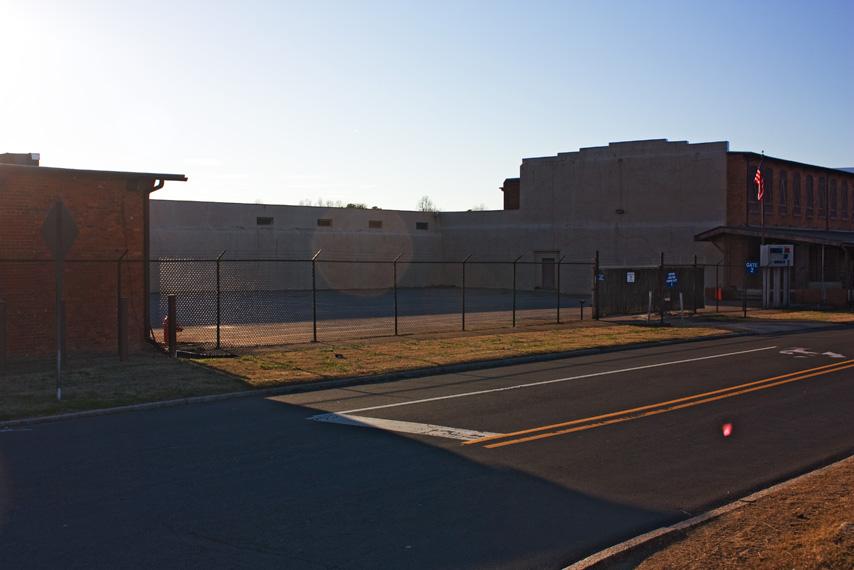
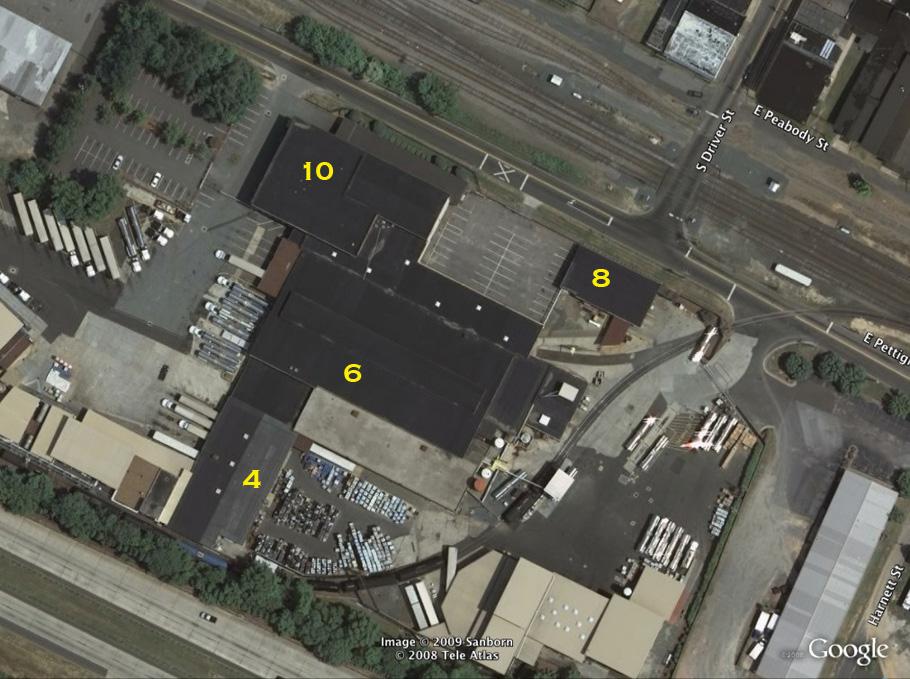
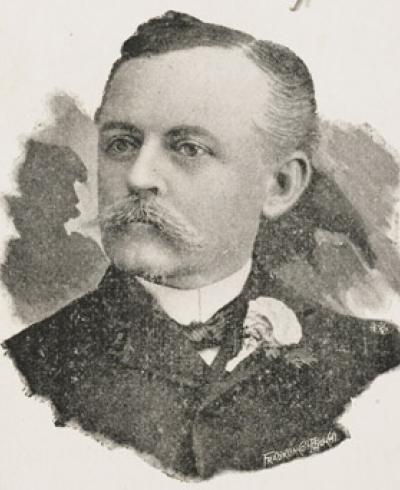
Comments
Submitted by MD saifur rahman (not verified) on Sun, 7/13/2014 - 8:04am
Can you please guide me with the cotton FoB price and. Minimum quantity for order..thank you
Add new comment
Log in or register to post comments.